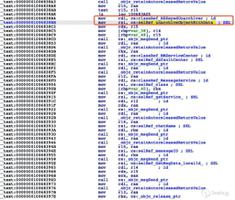具有OuterRef的简单子查询
我正在尝试使用一个非常简单的Subquery方法OuterRef(不是出于实际目的,而是为了使其正常工作),但是我一直遇到相同的错误。
posts/models.py 码
from django.db import modelsclass Tag(models.Model):
name = models.CharField(max_length=120)
def __str__(self):
return self.name
class Post(models.Model):
title = models.CharField(max_length=120)
tags = models.ManyToManyField(Tag)
def __str__(self):
return self.title
manage.py shell 码
>>> from django.db.models import OuterRef, Subquery>>> from posts.models import Tag, Post
>>> tag1 = Tag.objects.create(name='tag1')
>>> post1 = Post.objects.create(title='post1')
>>> post1.tags.add(tag1)
>>> Tag.objects.filter(post=post1.pk)
<QuerySet [<Tag: tag1>]>
>>> tags_list = Tag.objects.filter(post=OuterRef('pk'))
>>> Post.objects.annotate(count=Subquery(tags_list.count()))
最后两行应为我提供每个Post对象的标签数量。在这里,我不断收到相同的错误:
ValueError: This queryset contains a reference to an outer query and may only be used in a subquery.回答:
您的示例的问题之一是您不能queryset.count()用作子查询,因为它.count()试图评估查询集并返回计数。
因此,人们可能会认为正确的方法是使用Count()替代方法。也许是这样的:
Post.objects.annotate( count=Count(Tag.objects.filter(post=OuterRef('pk')))
)
这不能工作有两个原因:
查询集
Tag选择所有Tag字段,而Count只能依靠一个字段。因此:Tag.objects.filter(post=OuterRef('pk')).only('pk')是必需的(选择依靠tag.pk)。Count本身不是一个Subquery类,Count而是一个Aggregate。因此,由生成的表达式Count不能识别为Subquery(OuterRef需要子查询),我们可以使用来解决Subquery。
应用1)和2)的修复程序将产生:
Post.objects.annotate( count=Count(Subquery(Tag.objects.filter(post=OuterRef('pk')).only('pk')))
)
如果您检查正在生成的查询:
SELECT "tests_post"."id",
"tests_post"."title",
COUNT((SELECT U0."id"
FROM "tests_tag" U0
INNER JOIN "tests_post_tags" U1 ON (U0."id" = U1."tag_id")
WHERE U1."post_id" = ("tests_post"."id"))
) AS "count"
FROM "tests_post"
GROUP BY
"tests_post"."id",
"tests_post"."title"
您会注意到一个GROUP
BY条款。这是因为COUNT是聚合函数。现在它不会影响结果,但是在其他情况下可能会影响结果。这就是为什么文档提出了一种不同的方法的原因,该方法是subquery通过特定的values+
annotate+组合将聚合移动到中values:
Post.objects.annotate( count=Subquery(
Tag.objects
.filter(post=OuterRef('pk'))
# The first .values call defines our GROUP BY clause
# Its important to have a filtration on every field defined here
# Otherwise you will have more than one group per row!!!
# This will lead to subqueries to return more than one row!
# But they are not allowed to do that!
# In our example we group only by post
# and we filter by post via OuterRef
.values('post')
# Here we say: count how many rows we have per group
.annotate(count=Count('pk'))
# Here we say: return only the count
.values('count')
)
)
最终将产生:
SELECT "tests_post"."id",
"tests_post"."title",
(SELECT COUNT(U0."id") AS "count"
FROM "tests_tag" U0
INNER JOIN "tests_post_tags" U1 ON (U0."id" = U1."tag_id")
WHERE U1."post_id" = ("tests_post"."id")
GROUP BY U1."post_id"
) AS "count"
FROM "tests_post"
以上是 具有OuterRef的简单子查询 的全部内容, 来源链接: utcz.com/qa/412786.html







